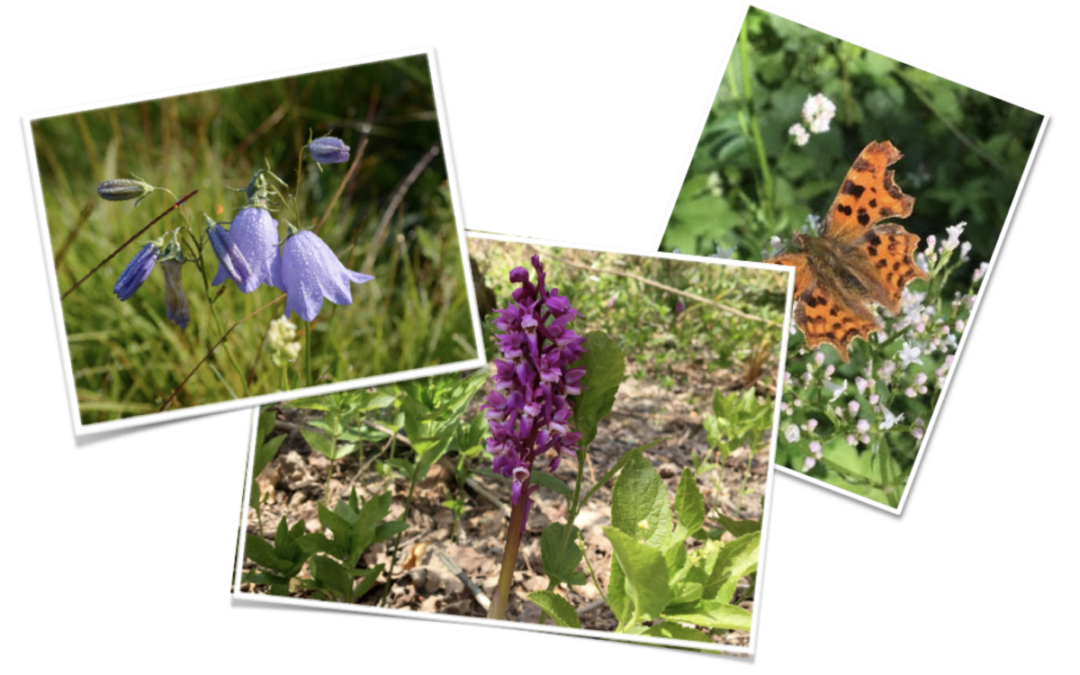More and more people locally are getting the message about the benefits of leaving sections of verges, or areas of gardens, to return to their more wild state, and in for process encourage wildflowers and biodiversity. Here’s a message from the Wild About Warbleton group that has been leading the charge locally:
your verge is a wildlife corridor . . .
You might not realise this, but your lawns and verges are a vital part of our countryside. Verges allow passage for numerous species of insects and small mammals and encourage wildflowers in an otherwise dwindling ecosystem. This decrease is caused by modern farming practices, increased development, and an ever-higher demand upon natural resources. We face an uncertain future and possible ecological breakdown if we ignore the nature all around us. That is why Wild about Warbleton are reaching out to homeowners such as yourselves to request that you reduce mowing on your own land and on any verges near your property. Together we can help regenerate our heritage, to make our lanes, verges and gardens burgeon with life again.
how to let nature thrive
To do this we need to let the seasons play out, to allow wildflowers time to flower and produce seed and we need to avoid increasing soil fertility. It’s a common misconception that wildflowers love fertile soil, they in fact favour impoverished soil. So only cut in the autumn, in late August or September, and remove the cuttings. In that way you will encourage wildflowers to thrive, support vital pollinators and a host of other insects and small animals. In addition, the combination of longer grass and wildflowers will absorb carbon dioxide in a similar way to a tree canopy and so contribute to the reduction of overall carbon dioxide levels in the atmosphere. This is great news for the environment.
making your own wildflower garden
The easiest way to make a garden wildflower meadow is to cease mowing as large a patch as possible and then watch what comes up. You might also like to create mown paths through it and have mown grass surrounding the area involved to give it good definition. Your patch should be open and sunny as meadow flowers prefer this to shade. Alternatively, you could remove the top few inches of turf in your proposed meadow area, rake the newly exposed soil and sow British wildflower seeds. Locally sourced seeds are ideal, and you may need to keep it watered if conditions are dry. Late summer is the best time to do this, but seeds may be sown any time from early spring until the end of May. Then leave the area to grow until late August when you can cut it down to around 2 inches. Remove the cuttings to avoid adding nutrients to the soil, which wildflowers do not like. This gives wildflowers the chance to develop and shed their seed. After this all you need to do is mow again some time before spring and then leave it until the following August – repeat and enjoy!
how to join in
Please join with us and help restore our natural world.
Wild About Warbleton (WAW) Contacts:
– Isabel Collett, Chairman, contact for Rushlake Green (01435 830263) isabelcollett@hotmail.co.uk
Caroline Thompson, Treasurer, Five Routes coordinator (01323 833921) carolinelouisethompson@gmail.com
where to get more information
‘Plantlife’, an environmental charity, have masterminded the UK’s good verge management campaign. They are working with five other organisations and over 20 UK councils to implement new guidelines on mowing grass just twice per year to allow wildflowers to bloom and set seed. https://www.plantlife.org.uk/uk

Recent Comments